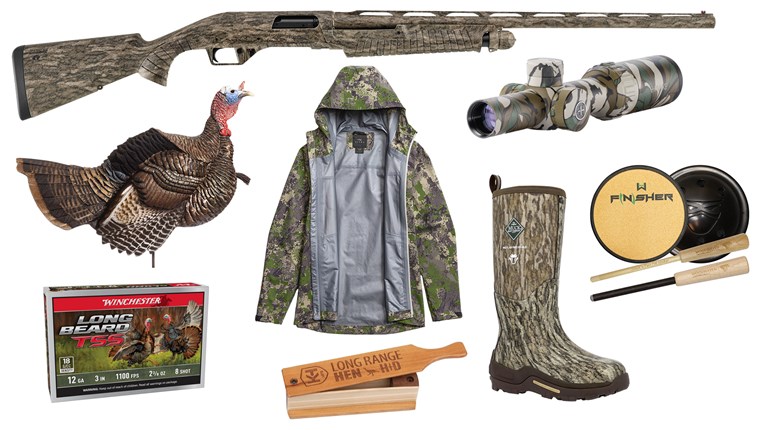
There is much discussion about what kind of handgun is best for survival or end of the world scenarios. Some folks say revolvers, some say semi-automatics.
Semi-automatic pistols generally have the advantage of capacity over revolvers, and are ideal for when/if you need firepower or just a gun with a lot of ammo on board. While most uses of a firearm might be for harvesting game, defense against two- and four-legged opponents is a real possibility. A pistol, especially a large-capacity semi-auto pistol, is a great tool for that. Most have between 15 to 20 rounds on board, and with potent and effective calibers. That’s a fistful of firepower.
Revolvers certainly have their place in these same scenarios, but they are limited in how much ammo they carry on board. At best, 10 rounds of .22 LR is what you’ll get. For larger calibers, capacity goes down. Given this comparison of high firepower automatics and low firepower revolvers, what sterling virtue does a revolver possess? It’s simple. First and foremost, a revolver will never lose its magazine.
A semi-auto pistol has a distinct advantage in firepower, but these bottom feeders also have a critical weakness. If you lose the magazine, you’re left with a single shot pistol.
Now, you’re not really prepared unless you have additional magazines for your pistol. But, since they are detachable and carried separately from the gun (belt or bag), they can get misplaced, stolen or simply may not be with you when you need them.
How on earth could you lose the magazine in the gun? In real life, crap happens. Stop for a moment and think about the ways this could unfold. Magazine releases get bumped and the mag is now ejected or loose (I’ve had this happen). If you don’t know when or where the mag was lost, it’s gone forever. Draw the gun and the mag is missing or falls out. If you’re moving to create distance at that time, it’s not a good time to stop and search for it.
Are you in the middle of a creek when the magazine drops? Say goodbye. If you go hand-to-hand combat with a human, lion, tiger or bear, it’s all too easy for the magazine release to get depressed. The point here is that worst-case scenarios happen and if the magazine is not attached to the gun, it might get lost.

With this in mind, you can prepare by attaching the magazine to the gun with a lanyard. Old GI .45 Autos had a lanyard ring on the mainspring housing and another on the base of the magazine. For my 1911 carry gun, I bought an extra strength magazine release spring to make it less likely to be depressed accidentally.
But, a revolver does not have this problem. The cylinder is attached to the frame by the crane on swing-out revolvers and the cylinder pin on single action guns. You can’t lose the cylinder unless a whole bunch of things go wrong.

It is possible to lose the screw that holds the crane or locks the cylinder pin. I’ve had this happen, too. I was bench shooting a revolver for accuracy and unknown to me the screw in the side of the frame that keeps the crane in place was slowly unscrewing and fell out. I opened the cylinder for a reload and—oops!—the cylinder/crane assembly slipped forward. What the heck? And, to make matters worse, I could not find that little screw in the rocky ground of the shooting range. However, the gun still worked.
So, crap happens to revolvers, too, but it’s pretty rare and they can still work even if the cylinder/crane retaining screw is lost. You can prepare for this, too, by making sure the screws are tight and even adding a little Loctite threadlocker 222 (purple) or at most 242 (blue) on the screw threads to keep them from unscrewing from vibration.
Another advantage of revolvers is that some have the ability to shoot several different calibers of ammo. For example, a gun chambered in .357 Mag. will also shoot .38 Spl., .38 Long Colt and .38 Short Colt. Thus you have a wide range of power, from low power (and low noise/recoil, which could matter) .38 Short Colt rounds all the way to full power .357 Mag. Same thing for many other caliber revolvers, too. Different ammo for the same gun for different purposes.

You can even get revolvers chambered in the same round as your semi-automatic pistol. These include .22 LR, .380 Auto, 9 mm, .357 Mag., .40 S&W, 10 mm Auto, .44 Mag. and .45 ACP. You only need to buy one caliber of ammo for your semiautomatic pistol and your revolver. This helps you to keep it simple!
Years back I was setting up a bug-out kit. I’m a semi-automatic guy. I like a gun with lots of ammo on board, so a large-capacity pistol is critical to my kit. But at the very core of my kit, is a place reserved for a revolver. Call it the ultimate backup gun, deep cover gun, or last resort gun, whatever you like. It has its own place, along with a little extra ammo. My choice was a S&W Model 340PD five-shot .357 Mag. revolver. It’s small and lightweight, which means I can keep it on me at all times. It even has a lanyard loop in the frame. I can connect it with my belt so I won’t lose it even if it flies out of my pocket/holster.

Every emergency/survival kit should have a handgun even if you have a long gun. They’re small and portable. You can keep a handgun on you at all times. And a revolver might just be the ideal survival handgun because they don’t have a magazine to lose. It will be your faithful, always ready companion no matter what comes your way.





































